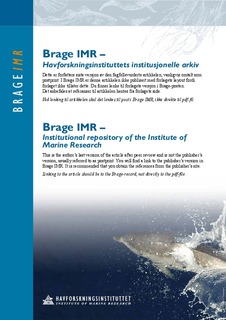Analysis of the Arctic System for Freshwater Cycle Intensification: Observations and Expectations
| dc.contributor.author | Rawlins, Michael A. | |
| dc.contributor.author | Steele, Michael | |
| dc.contributor.author | Holland, Marika H. | |
| dc.contributor.author | Adam, Jennifer C. | |
| dc.contributor.author | Cherry, Jessica E. | |
| dc.contributor.author | Francis, Jennifer A. | |
| dc.contributor.author | Groisman, Pavel Ya | |
| dc.contributor.author | Hinzman, Larry D. | |
| dc.contributor.author | Huntington, Thomas G. | |
| dc.contributor.author | Kane, Douglas L. | |
| dc.contributor.author | Kimball, John S. | |
| dc.contributor.author | Kwok, Ron | |
| dc.contributor.author | Lammers, Richard B. | |
| dc.contributor.author | Lee, Craig M. | |
| dc.contributor.author | Lettenmaier, Dennis P. | |
| dc.contributor.author | McDonald, Kyle C. | |
| dc.contributor.author | Podest, Erika | |
| dc.contributor.author | Pundsack, Jonathan W. | |
| dc.contributor.author | Rudels, Bert | |
| dc.contributor.author | Serreze, Mark C. | |
| dc.contributor.author | Shiklomanov, Alexander | |
| dc.contributor.author | Skagseth, Øystein | |
| dc.contributor.author | Troy, Tara J. | |
| dc.contributor.author | Vörösmarty, Charles J. | |
| dc.contributor.author | Wensnahan, Mark | |
| dc.contributor.author | Wood, Eric F. | |
| dc.contributor.author | Woodgate, Rebecca | |
| dc.contributor.author | Yang, Daqing | |
| dc.contributor.author | Zhang, Ke | |
| dc.contributor.author | Zhang, Tingjun | |
| dc.date.accessioned | 2010-11-17T11:57:02Z | |
| dc.date.available | 2010-11-17T11:57:02Z | |
| dc.date.issued | 2010 | |
| dc.identifier.issn | 0894-8755 | |
| dc.identifier.issn | 1520-0442 | |
| dc.identifier.uri | http://hdl.handle.net/11250/109001 | |
| dc.description | Journal homepage: http://journals.ametsoc.org/loi/clim | en_US |
| dc.description.abstract | Hydrologic cycle intensification is an expected manifestation of a warming climate. Although positive trends in several global average quantities have been reported, no previous studies have documented broad intensification across elements of the Arctic freshwater cycle (FWC). In this study we examine the character and quantitative significance of changes in annual precipitation, evapotranspiration, and river discharge across the terrestrial pan-Arctic over the past several decades from observations and a suite of coupled general circulation models (GCMs). Trends in freshwater flux and storage derived from observations across the Arctic Ocean and surrounding seas are also described. With few exceptions, precipitation, evapotranspiration, and river discharge fluxes from observations and the GCMs exhibit positive trends. Significant positive trends above the 90% confidence level, however, are not present for all of the observations. Greater confidence in the GCM trends arises through lower inter-annual variability relative to trend magnitude. Put another way, intrinsic variability in the observations limits our confidence in the robustness of their increases. Ocean fluxes are less certain, due primarily to the lack of long-term observations. Where available, salinity and volume flux data suggest some decrease in salt-water inflow to the Barents Sea (i.e., a decrease in freshwater outflow) in recent decades. A decline in freshwater storage across the central Arctic Ocean and suggestions that large-scale circulation plays a dominant role in freshwater trends raise questions as to whether Arctic Ocean freshwater flows are intensifying. Although oceanic fluxes of freshwater are highly variable and consistent trends are difficult to verify, the other components of the Arctic FWC do show consistent positive trends over recent decades. The broad-scale increases provide evidence that the Arctic FWC is experiencing intensification. Efforts which aim to develop an adequate observation system are needed to reduce uncertainties and to detect and document ongoing changes in all system components for further evidence of Arctic FWC intensification. | en_US |
| dc.language.iso | eng | en_US |
| dc.publisher | American Meteorological Society | en_US |
| dc.subject | climate change | en_US |
| dc.subject | klimaendringer | en_US |
| dc.subject | temperature changes | en_US |
| dc.subject | temperaturendringer | en_US |
| dc.subject | artic freshwater cycle | en_US |
| dc.subject | arktisk ferskvanns syklus | en_US |
| dc.title | Analysis of the Arctic System for Freshwater Cycle Intensification: Observations and Expectations | en_US |
| dc.type | Journal article | en_US |
| dc.type | Peer reviewed | en_US |
| dc.subject.nsi | VDP::Mathematics and natural science: 400::Zoology and botany: 480::Ecology: 488 | en_US |
| dc.source.pagenumber | 5715-5737 | en_US |
| dc.source.volume | 23 | |
| dc.source.journal | Journal of Climate | |
| dc.source.issue | 21 | |
| dc.identifier.doi | http://dx.doi.org/10.1175/2010JCLI3421.1 |
Tilhørende fil(er)
Denne innførselen finnes i følgende samling(er)
-
Articles [3012]
